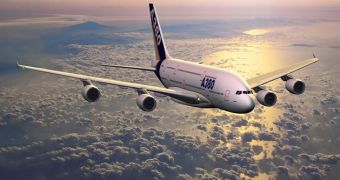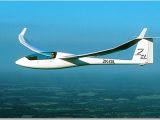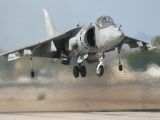Man has always been fascinated by the mysteries of flight and dreamed of conquering the skies and achieving the grace of birds. Icarus from the Greek legends flied with wings of wax, but got too close to the Sun, his wings melted, and he fell to the ground. The great Leonardo da Vinci, artist and Renascence inventor draw multiple flying machines, imagined by him four centuries before man discovered the secrets of flight.
Most of these attempt often ended up in disasters, mainly due to the failure to observe that the shape of the wings and their motion in the air, presented a key aspect in flight.
The first breakthrough came in 1738 when the Swiss mathematician and doctor Daniel Bernoulli realized that substances flowing with increased speed, presents a lower pressure than a flow at low speeds. Taking in consideration the fact that the air is a mix of different gases, the same rule applies to it as well. Air flowing on the surface of a bird's wing, is basically split into two air masses; one flowing on top of the wing and the second below it.
However, the shape of a bird's wing is not flat, it is slightly curved, meaning that the top surface of the wing presents a longer distance to travel than the bottom part. This basically means that the air on the top side will have a greater speed in relation to the air traveling through under the wing, determining a lower air pressure. In order to compensate the difference in pressure between the two surfaces, the wing is pulled in a upward motion determined by the force of ascension.
The first to take full advantage of this principle was Sir George Cayley, often called the father of aviation. He build the first glider in 1853, with which he successfully completed the first flight. In the beginning of the 20th century, the Wright brothers constructed for the first time an airplane that could be controlled in mid flight.
The basic shape of the wing bears resemblance to a water droplet flowing on a plane surface. The front of the wing is called the attack edge, and is slightly thicker and more curved than the back end of the wing called outboard. The flowing currents of air, follow precisely the principle described by Bernoulli.
However, other forces act on the wing during flight, not only the force of ascension that contributes to the lift of the airplane. One of those are experienced in the form of turbulence. After air leaves the outboard of the wing, it experiences a turbionari motion similar to that of water draining through a hole. The phenomena is called initial turbulence, which produces a second effect called counter-turbulence having the same strength of the force that produced it; however, it drives the air mass into a spin opposite to the original. Airplanes encountering such masses of air are basically slowed down.
Before the invention of the first glider and well after that, most people believed it's not possible to make heavier than air objects to fly. They failed to observe one key aspect of the problem: birds are heavier than air, and they can fly. Wilbur and Orville Wright solved one of the problems related to flight by providing the required force of propulsion for a flying machine via smaller engines and lower weight components.
Until the early 1940s most of the airplanes were equipped with internal combustion engines functioning on the basis of the Otto cycle, though Henri Coanda, Romanian inventor and aerodynamic pioneer had invented the jet engine over three decades earlier. The advantages of jet propulsion are obvious. They provide increased propulsion force by using low amounts of fuel at high speeds. Nevertheless, at lower speeds they are incredibly inefficient, due to the high fuel consumption.
Some of the latest aircraft models, such as those used on airplane carriers, often incorporate special liftoff and landing systems, thus requiring shorter runways. They acquire such capabilities by redirecting the total thrust of the jet engine in a downwards motion during the liftoff and landing stages.
Currently, the aircraft is considered to be the safest way of travel. In the 583 accidents occurring during the 1983-2000 period, more than 96 percent of the people involved in them survived or suffered minor injury.

 14 DAY TRIAL //
14 DAY TRIAL // 

